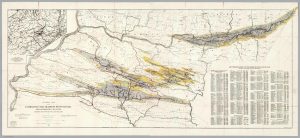The past few weeks have shown me the importance of making deliberate decisions with convincing justifications. Given the amount of freedom we have to develop our research questions and final projects, the process of deciding the direction in which to take my work proved to be a challenging one. I wanted to focus on internet development in China, but this topic remains very broad and can be explored in several different ways. It is only after reading reports by CNNIC and various other articles that I decided to focus on the areas in which consumers in China feel the greatest impact and is most evident in people’s everyday lives.
The next step would then be to understand the different developments that have been rapidly growing in importance in China over the past few years. I have seen snapshots of these changes through my short visits back, and hence started my project off intending to focus on the ones that I saw the most of and felt the greatest presence – Alibaba, WeChat, Didi Dache, Dianping. However, as I continued researching and reading about the topic, I was introduced to the complexities of internet companies in China. It was a challenge understanding the connections between different companies and recognizing the scale of each company’s influence within the market. I soon realized that Alibaba and Tencent were far more significant than Didi DaChe and Dianping. Baidu, a search engine company which I never intended to touch upon, became difficult to ignore as it appeared on reports and articles time and again. After further research, I decided to focus on the ‘Big Three’ and hopefully briefly touch upon the other companies they are each investing in and competing against.
Working on the timeline for Alibaba forced me to really think about the focus and purpose of my project. The audience I am writing to is likely to be someone not entirely familiar with China’s e-commerce or instant messaging companies, so I drew parallels of these companies to those of the US’ that reach a far wider audience all across the world. Also, among the numerous events that the company deems ‘significant’, which are the ones that I should fit into my timeline to answer my research question? Looking at reports from the perspective of a typical consumer, I picked out the ones that are most meaningful to the public and omitted what may be relevant to perhaps an investor or even the government.
I don’t want my final project to just be a business report of the three different companies I have decided to focus on without any further analysis of the data and pieces of information collected. It is definitely more difficult finding relevant reports and articles in these areas that add meaning to the data available, and this is an area I will continue to work on.

 On Thursday, we took our much-anticipated trip to Bryn Mawr College for
On Thursday, we took our much-anticipated trip to Bryn Mawr College for
Recent Comments